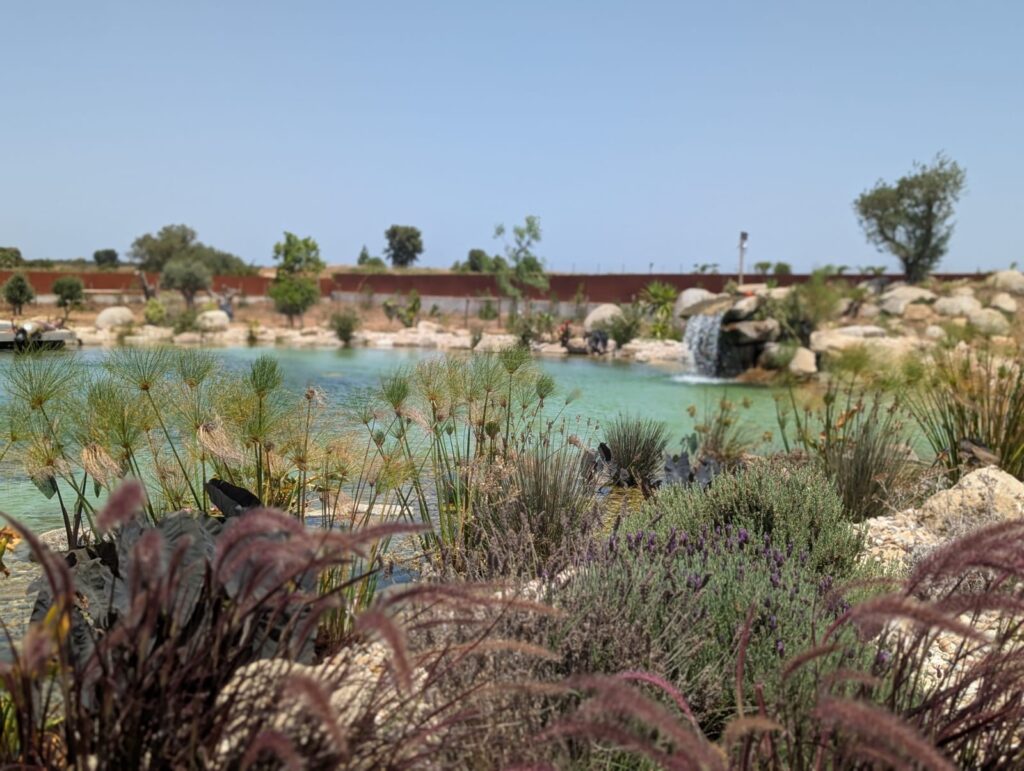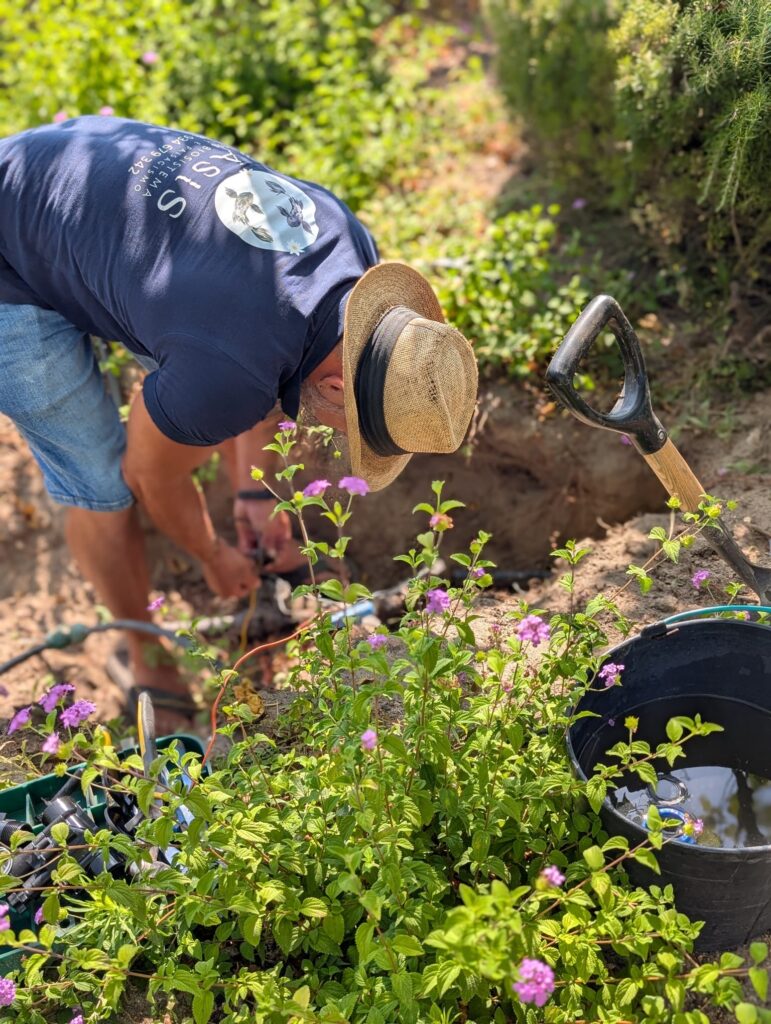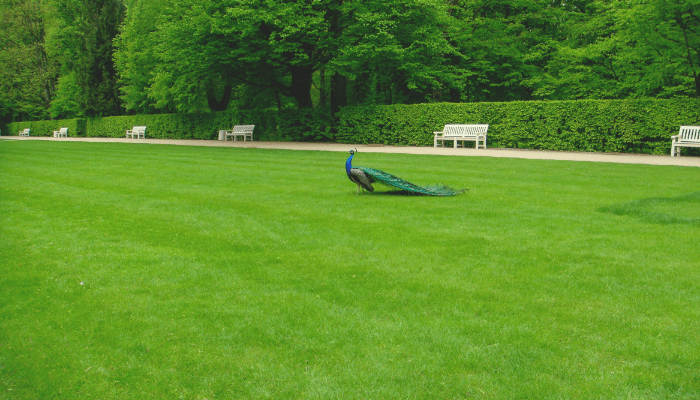Sloped gardens can be challenging but they can also be among the most striking, productive, and resilient spaces on a property. The trick is knowing how to work with the slope, not against it. Soil washes out. Water rushes where it wants. Gravity does what it does. But smart design turns instability into structure.
Here’s the thing: most homeowners approach sloped gardening as a problem to solve, rather than a landscape to design. That shift in mindset matters. Because with the right grading, plant selection, and irrigation plan, even a steep incline can support native plants, pollinator gardens, terraced vegetables, or low-maintenance groundcovers.
In this guide, we’ll take a practical look at what it takes to garden successfully on a slope. Whether you’re managing a gentle bank or a sharp hillside, you’ll learn how to stabilize soil, choose the right plants, and build out structures that last.
This isn’t just theory. These are field-tested strategies you can apply immediately.
Let’s break down the slope, one layer at a time.
Key Takeaways
- Analyze slope gradient, soil type, and water flow before planting
- Terracing and retaining walls add stability and accessibility
- Mulch, netting, and ground covers reduce erosion risks
- Use deep-rooted, drought-tolerant plants suited to each slope section
- Drip irrigation systems are ideal for even water distribution
- Group plants by water needs and root structure for better performance
- Perform seasonal maintenance to check for erosion and plant health
- Blend structure and aesthetics to create a functional, attractive landscape

Assessing the Slope: Start With Site Analysis
Before you plant anything or move a shovel, take a step back and study the slope. The angle, soil condition, sunlight exposure, and water runoff patterns all shape what’s possible and what’s not.
First, measure the gradient. Is it a gentle incline or something steeper that makes mowing a liability and terracing a necessity? Anything above 20% grade often requires structural support to prevent erosion or collapse.
Then examine your soil. Is it compacted clay, loose sand, or rich loam? Slope soils are often shallow and prone to drying out, which means compost and organic matter will play a large role in success.
Sunlight is also rarely uniform on a slope. South-facing banks may bake in direct heat, while the shaded side could stay damp and cool. Matching plant selections to microclimates across the slope is key to preventing stress and failure.
And don’t skip the water check. Where does rainfall go? Does it puddle at the base, rush off the top, or carve little channels through the middle? Before designing, you need to understand where gravity wants to take the water, and how to work with that, not against it.
Structural Solutions: Terracing, Retaining Walls, and Steps
Trying to garden on a steep slope without structure is like building a library on a sand dune. Sooner or later, everything shifts.
Terracing is one of the most effective ways to stabilize a sloped garden. It transforms steep ground into a series of flat planting zones, each with its own micro-ecosystem. You can do this with timber, stone, or concrete, depending on budget and aesthetics. Even simple dry-stacked rock terraces can dramatically slow runoff and anchor soil.
Retaining walls come next. These aren’t just functional, they’re safety features. If your slope shows signs of erosion, cracking, or collapsing, a well-engineered wall can prevent further damage. Higher walls should always be built or reviewed by professionals, especially if they carry water pressure.
Steps and pathways are equally important. Not only do they make your garden accessible, but they also help break up long expanses of slope. That helps redirect water and reduce foot traffic erosion.
In short: structure first, plants second. Always.

Soil Retention Techniques and Erosion Control
Exposed soil on a slope is a risk. The moment it rains, you lose nutrients, structure, and stability.
To prevent this, start with mulch. Organic mulch like wood chips, bark, or straw form a protective barrier that slows water, retains moisture, and feeds the soil over time. For new plantings, mulch should be applied thickly (3 to 4 inches), but not packed against plant stems.
If your slope is particularly vulnerable, consider jute netting or biodegradable erosion blankets. These materials stabilize the surface while plants take root and can be staked into place with minimal effort.
For long-term stability, install contour trenches or shallow swales, these follow the natural curve of the slope, capturing and slowing rainwater so it infiltrates rather than escapes. You’ll retain more water and reduce erosion at the same time.
Ground cover plants play a major role here too. Their roots bind the soil. Their foliage protects it. And once established, they require far less attention than a bare slope constantly shedding material.
Best Plants for Sloped Gardens
Not all plants are slope-friendly. Some struggle to take hold, others are too shallow-rooted, and some require more water than you’ll ever be able to keep in place. So choose wisely.
Look for plants that offer three key characteristics: deep root systems, drought tolerance, and low maintenance.
For gentle slopes, ornamental grasses like Festuca, Carex, or Panicum are excellent. Their root systems are dense, their visual movement adds life, and they adapt well to uneven terrain.
Moderate slopes benefit from spreading ground covers. Think creeping thyme, periwinkle, sedum, or liriope. These plants create a living mulch that locks in soil and limits weed growth.
Steep slopes? Go with shrubs. Aronia, juniper, spirea, or sumac can establish deeply and hold fast in rough weather. Native species are always a good choice, as they’re adapted to local conditions and support native insects and wildlife.
Planting in groups, rather than in isolated pockets also helps. A cluster of five plants works harder than five scattered across ten feet. More root mass. More coverage. Less erosion.

Irrigation Strategies for Slopes
Water is a challenge on slopes. Too much, and it runs off before it’s useful. Too little, and the topsoil dries out while plants struggle.
Sprinklers are often inefficient here. They lose water to evaporation and fail to deliver consistent moisture across different elevations. Instead, drip irrigation or soaker hoses are the preferred methods.
These systems release water slowly at the root zone, reducing runoff and maximizing absorption. Install them along contours or planting beds to ensure even distribution.
Timing matters too. Water early in the morning when evaporation is low and runoff minimal. Avoid midday watering, and never flood the slope. The goal is deep, infrequent soaking, not a daily trickle.
If you notice dry patches at the top and overly wet areas at the base, adjust your zones. Slopes naturally cause uneven water distribution, so plan accordingly from the beginning.
Maintenance Tips for Long-Term Success
Once your slope is planted and stable, the work isn’t over. Slope gardens are dynamic systems. They shift, settle, and require seasonal attention.
Inspect regularly. After heavy rain, walk the site. Look for exposed roots, pooled water, or signs of soil movement. Early intervention prevents bigger problems later.
Refresh mulch annually to retain moisture and suppress weeds. Prune back overgrowth to maintain visibility and plant health. And remove invasive species as soon as they appear—slopes are hard to reclaim once fast-spreading plants get a foothold.
Also, pay attention to how your plants age. Some will outgrow their usefulness. Others may become woody or sparse. Replacing older plants with fresh ones helps maintain dense coverage and strong root structure.
Don’t forget safety. Loose stones, unstable stairs, or slippery paths should be addressed promptly. A beautiful garden should also be safe to access and use.

Design Considerations for Aesthetic and Functionality
Sloped gardens can be stunning, if designed with intention.
Use layering to create depth. Taller plants go higher up, shorter ones near the bottom. Not only does this enhance visibility, it mirrors the way natural landscapes function.
Curved lines are more effective than straight ones on uneven terrain. Contour paths, arched planting beds, and organic shapes feel more cohesive and adapt naturally to the slope.
Choose a consistent material palette. Whether it’s stone, wood, or metal, your hardscaping should feel unified. Visual cohesion helps tie the structure to the plants, even if the gradient changes from one section to the next.
Finally, balance functionality with beauty. Every slope garden must manage water, prevent erosion, and stay accessible. But it should also reflect your aesthetic values. Native wildflowers? Formal terraced vegetables? Ground cover meadows? Each is valid, as long as the structure behind it supports the vision.
Conclusion
Sloped gardens don’t need to be a source of frustration. With the right planning, they become a standout feature that is structurally sound, visually layered, and functionally productive.
Start with the site. Understand the gradient. Then select soil-friendly plants, control water intentionally, and build in structure that makes future maintenance less reactive and more routine. That’s the long game.
Avoid shortcuts. Slopes magnify small problems quickly like poor drainage becomes erosion, overlooked planting gaps become washouts. But when done well? These gardens hold together through seasons, support native biodiversity, and often outperform flat beds in both resilience and beauty.
If you’re unsure how to get started or want help designing or building a slope garden that works, our landscape design team can provide detailed planning, plant selection, and on-site implementation support. From erosion control to custom terracing, we handle the complexities so you can enjoy the results.
Ready to make your slope work for you? Contact us to schedule a consultation and turn your hillside into a thriving, low-maintenance landscape.
FAQ
Can I grow a garden on a slope?
Yes, you can grow a garden on a slope with proper planning. Sloped gardens offer good drainage, making them ideal for certain plants. Use terraces, retaining walls, or ground covers to prevent erosion. Choose deep-rooted or slope-adapted plants for best results and long-term success.
What to do if your garden is on a slope?
If your garden is sloped, start by assessing the gradient and drainage. Build terraces or raised beds to create level planting areas. Add erosion-control plants, mulch, or retaining features. Consider planting by zones, using drought-tolerant species at the top and moisture-loving ones at the bottom.
What is the best thing to plant on a steep hill?
The best plants for steep hills are those with deep or fibrous root systems that prevent erosion. Ideal options include creeping thyme, ornamental grasses, junipers, lavender, and ground covers like vinca or ivy. These plants stabilize the soil while adding color and texture to the slope.
How to hold back soil on a slope?
To hold back soil on a slope, use retaining walls, terracing, erosion-control fabric, or densely planted ground covers. Adding mulch and strategic plantings helps stabilize the soil. For steeper areas, consider gabion baskets, logs, or stone edging to reduce runoff and prevent landslides.



